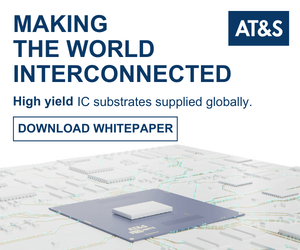I caught up with Alchimer CEO, Steve Lerner last week at the IWLPC in Santa Clara, to find out how things have progressed since news of Panasonic Investment Partners’ equity investment in the company back in July. It turns out setting up shop in Asia has been a great strategic move for the start-up. Last week’s announcement of the Alchimer’s licensing agreement with Nagase ChemteX unit of Tokyo-based Nagase & Co., Ltd. in Japan is just another indication of that. Lerner’s assessment of the situation: “Things have taken off in Southeast Asia. While the US continues to talk, and Europe continues to be on holiday, Asians are cooking.”
Explaining further, Lerner noted that to date, August was the France-based company’s busiest month ever. “We’ve run more product in August than any prior month. If it hadn’t been for the Ansan lab (Alchimer’s 300mm lab and demo facility in Korea) we would have been in trouble,” he noted. “Moving manufacturing there was a necessary strategy.” The Ansan lab opened shortly after Alchimer entered into a multi-level collaboration with KPM Tech Ltd. that gives that gives KPM exclusive rights to produce chemicals in Korea for Alchimer’s technology as well as manufacture wet processing tools to support the Alchimer TSV platform.
Lerner says the Nagase agreement is the most extensive agreement they have yet, and expects it to increase the company’s resources to address the Japanese market. The plan is to put a 300mm line into Japan, and under exclusive license, Nagase will manufacture the chemicals for the AquiVia family of wet deposition processes.
According to Lerner, one of the advantages of working with Nagase is that the company is already well established in the semiconductor space as a provider of photoresists, strippers, epoxies, etc. Creating this Japanese venue allows them t provide demonstrators to Japanese market for companies like NEC, Elpida, and others. The main difference between the two agreements is that Alchimer owns and operates the lab in Korea, while in Japan, Nagase operate the lab under license, added Lerner.
Meanwhile, the company’s facility in Massy, France continues to be the company’s scientific center for R&D. Once processes are scaled to the wafer level, they’re transferred to the demo centers in Asia. “It’s a clear and logical path to industrialization,” explains Lerner.
All things tolled, the strategy appears to be working. Lerner says the company is generating revenue now and plans to break even next year. Customers are in the development phase with applications such as interposers, memory stacking and memory on logic with products expected to be released by the middle of next year. Additionally, Lerner says there are other applications and products beyond TSV targeted for the AquiVia processes such as LEDs, flex, flat panel displays, solar applications, and MEMS TSVs. “Things are going according to plan,” says Lerner. “We need to take it all the way and make it a winner.”






















